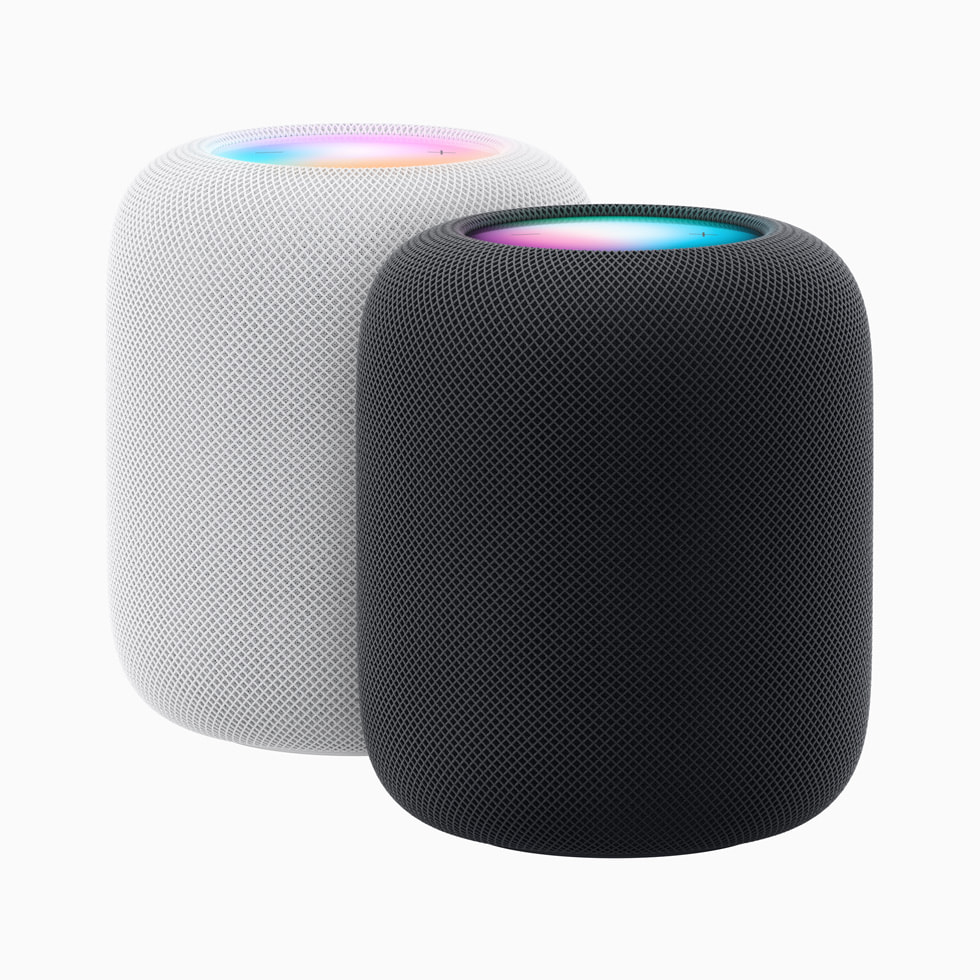 IOT
IOT
 IOT
IOT
 IOT
IOT
Fresh from delivering a January surprise in the form of M2 Pro-powered MacBook Pros, Apple Inc. has today announced a new HomePod smart speaker.
The HomePod was launched in 2017, with the most recent version until today being announced in 2020. The HomePod is Apple’s version of Amazon.com Inc.’s Echo devices but more expensive and catering to a niche of Apple fanboys. Niche, in this case, is a nice way of describing poor sales, which is why it’s surprising that Apple is trying again.
The second-generation HomePod is pitched by Apple as offering “breakthrough sound and intelligence” with “incredible audio quality, enhanced Siri capabilities and a safe and secure smart home experience.” Among other superlatives used by Apple are “next-level acoustics in a gorgeous, iconic design.” An iconic design in Apple marketing terms means it looks the same as the original one.
But under the hood the new HomePod does have new features. The new HomePod now has room-sensing technology that can recognize sound reflections from surfaces nearby. The Wall Street Journal describes the feature as helping the speaker determine whether it is close to a wall or is in an open room, which allows it to adapt the sound to fit its surroundings.
The new HomePod also features a “ground-breaking listening experience” that includes support for “immersive Spatial Audio tracks.” That sounds impressive, but at this point, Apple’s marketing team in Cupertino is so disconnected from the real world that there is no explanation in the press release that explains what that means.
Other features include the HomePod being able to hear when a smoke or carbon monoxide alarm is detected and the ability to check temperature and humidity, the latter making the HomePod an expensive thermometer.
“Leveraging our audio expertise and innovations, the new HomePod delivers rich, deep bass, natural mid-range, and clear, detailed highs,” Greg Joswiak, Apple’s senior vice president of Worldwide Marketing, describe the device as having. “With the popularity of HomePod mini, we’ve seen growing interest in even more powerful acoustics achievable in a larger HomePod.”
The new HomePod comes in black and white, but it’s 2023 and Apple describes them as “white and midnight.” The outside is made with 100% recycled mesh fabric, with a color-matched woven power cable that apparently you’re not allowed to call black.
Under the hood, the new HomePod has an S7 chip, the same chip featured in the Apple Watch Series 7 that debuted in 2019, that when combined with software and system-sensing technology offers “even more advanced computational audio that maximizes the full potential of its acoustic system for a groundbreaking listening experience.”
“Precise directional control of its beamforming array of five tweeters separates and beams direct and ambient audio, immersing listeners in crystal-clear vocals and rich instrumentation,” Apple writes. It can also be paired with the Apple TV 4K, another Apple device that hasn’t sold well.
The second-generation HomePod is available to order for $299 starting today from Apple stores in Australia, Canada, China, France, Germany, Italy, Japan, Spain, the U.K, the U.S., and 11 other countries and regions, with delivery starting Feb. 3.
The news of Apple’s new smart speaker comes after it has been reported that the long-awaited Apple mixed reality headset has been delayed yet again. The device was believed by many to be coming this year but instead has apparently been delayed until at least 2025.
THANK YOU